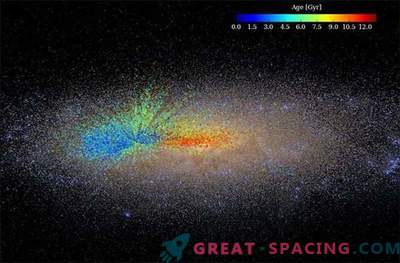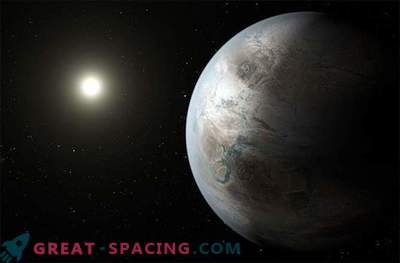
Embry-Riddle Aeronautical University researchers used Gaia satellite data to determine the stellar age
The age of the Milky Way reaches 13 billion years, but how many birthdays has each star inside noted? A new technique for understanding the history of the stellar birth of the galaxy in unprecedented detail allows us to calculate the stellar age twice as accurate as conventional methods.
Modern methods of dating stars, based on the objects of the main sequence (starting to die after the complete consumption of hydrogen), offer a 10-20% error. The use of white dwarfs reduces the error to 5% or even 3%. For the method to work, the team must determine the temperature of the stellar surface, as well as study the atmosphere of hydrogen or helium, and the mass. Surface temperature is determined by the color of the star and atmospheric components.
Mass is important because massive objects are endowed with more energy and need more time for cooling. Therefore, a cup of coffee cools more slowly than a teaspoon with a drink. Understanding the presence of hydrogen or helium also plays a significant role, because helium emits heat from the star more readily than hydrogen.
It is extremely difficult to determine the exact mass of the star, especially when it comes to white dwarfs. But now there is a new method for the latter. It uses data from the ESA satellite Gaia - an ambitious mission to form a 3D map of the Milky Way. The project is significant in that it accurately determines the distance to the stars. Celestial objects are able to be in different places, depending on the point of view of the observer. Gaia measurements are based on the parallax geometry of objects. This helped scientists determine the stellar radius based on brightness. This information on the ratio of mass and radius used to fill the last component to calculate the age of the star.
Having determined the abundance of star elements (metallicity), researchers can further clarify the age. The team focused on a star pair with a white dwarf and an object of the main sequence, like the Sun. In the second example, we studied two white dwarfs in a binary system. It was necessary to determine the maximum number of elements in the periodic table for the main sequence star in a pair. This allows you to understand the galactic chemical evolution.
This is preliminary work, but in the end the team hopes to publish the exact age of all the white dwarfs in the Gaia data. This will allow a better understanding of the history of the birth of stars in the Milky Way.











































